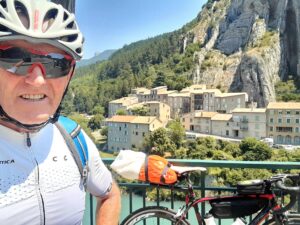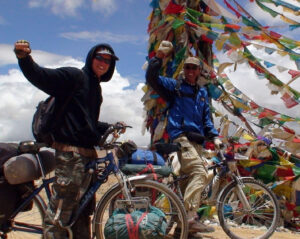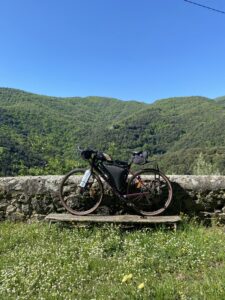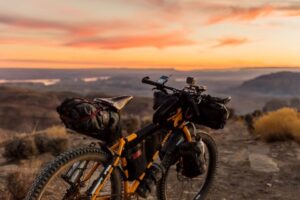
Adventure seekers have traveled the world on pretty much anything with wheels – from unicycles to penny farthings. And while it is true that you can go on bike tours on nearly any working bike, it is also true that carefully selecting the right bike and gear can make your journey a lot more pleasurable.
That said, there is no single best touring bike for all types of cyclists. You will need to consider several factors to figure out what kind of bike suits your needs best. Let us take a quick look at these factors, followed by a discussion on the specs and features of touring bikes that align with each of these factors.
Factors to Consider Before Buying a Touring Bike
1. Distance
If you are planning to go on short tours, you obviously don’t need to spend much on a full-fledged, cutting-edge touring bike. You can buy a used one or even convert a regular bike into a touring bike with some adjustments. On the other hand, long tours spanning hundreds or thousands of miles need proper consideration of factors such as durability, strength, etc.
2. Location(s) and Terrain
Where you ride decides what you ride. Based on whether you ride mostly on paved roads, gravel tracks, or muddy fields, you will have to select a bike with components that match the terrain. You may also want to stick to simpler components when riding in deserted areas or areas without sophisticated bike shops.
3. Load
A major factor that separates touring from other types of biking is the load carried on the bike. If you want to carry large amounts of weight, you should choose a bike with a stronger frame, wheels, and tires.
4. Speed
Touring isn’t always about speed, but for some of us, it can be. If you are a fan of speed, you may want to shed some of the gear weight and go for a lighter bike, which also reduces its load-carrying ability.
5. Budget
Last but not least, cost is almost always a decisive factor in buying a new bike. You can buy a proper working touring machine from a few hundred bucks all the way to five-figure price tags. When finalizing a bike purchase, make sure that you have an optimum balance between all the above factors and the cost.
Like we said before, there isn’t a single, ultimate touring bike that can tick all the boxes. You cannot have a bike that is the fastest, strongest, tackles every terrain, and is yet inexpensive. You will need to optimize by choosing factors that suit your tours better.
This makes it important to understand the typical specs and features of touring bikes and see which of them align with which of the above-mentioned factors.
Specs and Features to Consider in a Touring Bike
1. Frame
The frame of your touring bike carries much of the weight and is an important feature that can make or break your tour (and your bike). Traditionally, touring bicycles have always used steel frames, thanks to their unbeatable strength.
Steel bikes can carry huge amounts of load and can sustain dents or bends without losing their structural integrity. They are also easier to repair and can be fixed anywhere you can find a welder. However, steel bikes are heavy and susceptible to corrosion in the long run.
A lot of modern touring bikes offer aluminum frames. While aluminum is slightly less durable than steel, it has a much better strength-to-weight ratio, meaning it is significantly lighter despite being able to carry good amounts of weight. They are also resistant to corrosion. If you like traveling light, aluminum is for you; but if you are planning on loading your bike with a lot of stuff and are heading to unknown lands, go for steel.
Lastly, touring bike frames usually come with plenty of mounting braze-ons and eyelets, which allow you to mount pannier racks and bags all over it. While bikes without mounting holes also allow loading custom bags using velcro and straps, it is far less secure and stable.
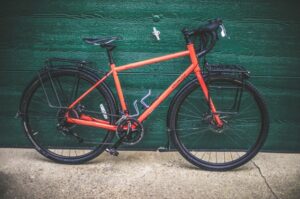
2. Geometry
At first glance, most touring bikes look similar to standard road bikes. However, they have subtle differences that make them more suited to the long haul. For instance, touring bikes have longer chainstays (lower rear tubes that connect the crank and the rear hub). This prevents your heels from annoyingly hitting your rear panniers while pedaling.
Secondly, many touring bikes have a more relaxed seating position – prioritizing comfort over speed. Many bikes also feature a longer wheelbase for better stability. If you plan on riding long distances with heavy loads, look for more relaxed geometries with longer chainstays and wheelbases.
3. Gearing
Another distinguishing feature of a touring bicycle is its gearing. Climbing a hill with over 50 pounds of stuff on your bike is no joke. This is why many touring bikes come with a larger range of gears. This allows you to conquer steeper climbs or to take it easy on flat roads when your legs are tired.
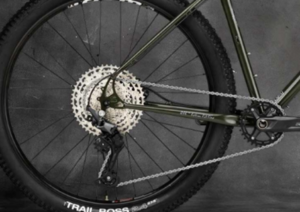
If you expect to tackle a lot of hills, look for a higher number of gears, such as the 11-gear cassette shown in the above image. Besides the higher range, you can also choose to go with 1x drivetrains that have just a single front gear, allowing uncomplicated use (also shown above).
4. Wheels and Tires
Your touring bike’s wheels transfer all the weight on the bike to the tires, and the tires are the only point of contact with the ground. This makes the wheels and tires two of the most important components of the machine.
Touring bikes come with a variety of wheel sizes, with 700C and 26-inch being the most common. Shorter individuals can opt for smaller tires, which will allow for better handling, especially when frequent mounting and dismounting is required. Another important wheel aspect is the spokes – a higher number of spokes means a stronger wheel.
As for tires, tourers use everything from 32 mm wide tires all the way to 5-inch-thick fat tires. Your choice of tire size depends on your terrain. If you are riding off-road, prefer wider tires with deeper treading. Wider tires are also better able to handle heavy loads while providing a small amount of shock absorption. That said, 35-38 mm tires are the most common size used for touring.
You can choose between tubeless tires and regular, clincher tires which house tubes inside them. Tubeless tires allow you to go farther distances even when punctured, unlike tubed tires, which go flat instantly. However, tubeless tires are more difficult to fix, while the more common clincher tires can be fixed even in the smallest of bike shops or by yourself on the road.
5. Handlebars
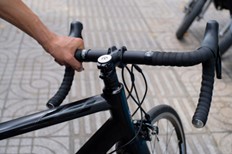

The type of handlebars may not be as important as the frame type or wheel size, but they can have a significant impact on your overall comfort. Most touring bikes come with drop bars, which allow three different riding positions – drops, flats, and hoods. Drop bars can also allow for more aerodynamic positions and greater speeds.
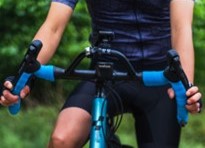
Flat bars, on the other hand, allow better handling on difficult terrains. They may, however, lead to sore wrists on long journeys. Some manufacturers also offer more unorthodox types of handlebars, such as butterfly or H-type. The best way to find out what suits you is to try all types.
6. Brakes
Braking requires special consideration in touring bikes since you need a higher stopping power when carrying a lot of weight. The two main available brake types are rim brakes and disc brakes.
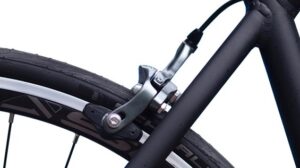
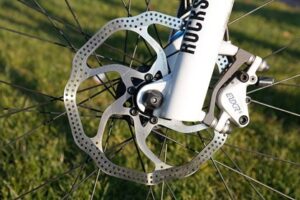
Rim brakes are the classic option and are easier to fix almost universally. Disc brakes, on the other hand, offer better braking and lower maintenance. However, disc brakes are more difficult to repair, especially hydraulic ones.
Summary
Buying a touring bike can feel both exciting and daunting, thanks to the virtually limitless options available. Additionally, the incredibly long journeys you will make on your bike makes it important to buy the right one.
When getting a new touring bike, there cannot be a cookie-cutter solution. Different bikes and features suit different individuals, and it is important to list down the factors that will dominate your tours – from types of terrain to the amount of load and the required speeds.
Ultimately, buying the right bike involves a perfect optimization between all the decisive factors and in turn, all the available specifications, features, and prices.


